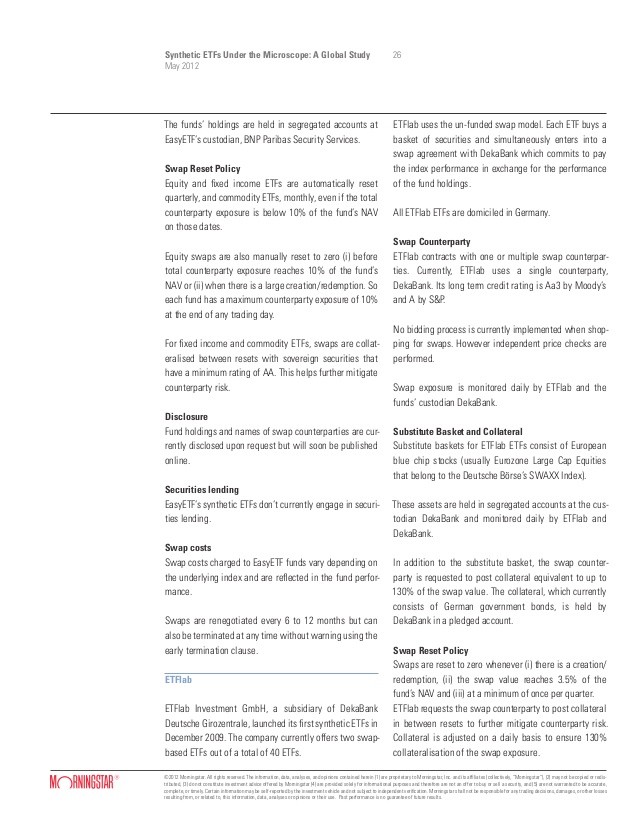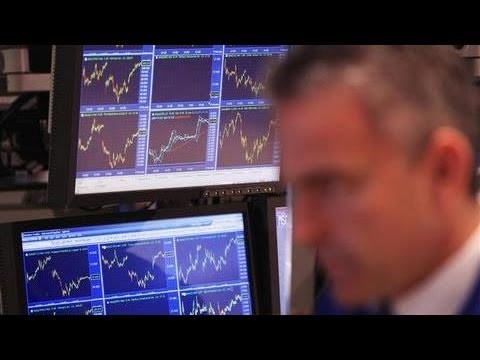VelocityShares CIO on VIX Focus on Funds
Post on: 14 Июль, 2015 No Comment

By Johanna Bennett
When the man credited with creating the fear index offers harsh words for the investment products that have sprung up around the Vix, Wall Street takes notice. Also to be expected, some pundits have taken issue with Robert Whaleys recent remarks.
On Friday, my colleague Brendan Conway reported in this very blog that Whaley claimed to be “shocked” and “appalled” at the makers of exchange-traded funds and notes built around the index, and signaled out the instruments’ high carry costs and complex construction as dangers.
Whaley recently signed on as a partner in startup AccuShares Investment Management. which plans its own volatility exchange-traded fund. Among the products he cited in his remarks were iPath S&P 500 VIX Short-Term Futures ETN (VXX ), VelocityShares Daily 2x VIX Short-Term ETN (TVIX ) and ProShares Ultra VIX Short-Term Futures ETF (UVXY )
Today, Nick Cherney, CIO of VelocityShares. the index company behind many of the exchange-traded products that offer exposure to volatility, sent an open letter to Wall Street addressing Whaley criticism. Here’s the text of his letter:
Recent news coverage of comments concerning the VIX and VIX Futures market necessitate clarification. By now I would hope people commenting publically on the VIX would understand that the VIX is not an investable index. Its construction is theoretical, and basic economic forces ensure that no product can be developed which will deliver spot VIX returns on a consistent basis. I could deconstruct the technical reasons why this so (for example the square root in the VIX calculation makes it impossible to replicate) however the fact remains that an extraordinarily deep and active market exists for investors to buy and sell the VIX, it is called a futures market. If buyers and sellers were willing to exchange spot VIX returns,you would indeed be able to buy spot VIX, and you would do it in the futures (or ETP) market. Instead there are very basic economic reasons to expect buying spot VIX returns will and should be very expensive almost all the time.
The VIX itself has all of the properties one would theoretically look for in an equity hedge. It is mean reverting (in other words in the long run it is cost less), it is highly negatively correlated to equities, and has very convex upward spikes. These features all mean that it isvaluable. And valuable things cost money. The result is that VIX futures are steeply upward sloping and long only VIX futures positions should be expected to lose significant money. Median annual returns for the VIX Futures index have been -50% since inception. This is the same basic economic reality that makes it so expensive to buy put protection. You cannot simply change the fact that it is valuable to protect an equity portfolio from declines.
People have attempted in the past to create exchange traded products which circumvented the pricing pressures that cause futures prices to vary from spot prices. Those products imploded when market participants began aggressively arbitraging them. Any spot VIX product (or other spot commodity product for that matter), no matter how aggressively engineered, will be subjected to similar arbitrage pressures. The properties of the VIX make it likely that there would be unlimited demand to buy a long VIX position at no cost and zero demand to sell it. Institutional investors would gladly buy spot VIX vs a short VIX futures position all day, pocketing the negative carry in VIX futures while being hedged against a VIX spike. Almost unlimited money would likely chase this strategy. And as a result the spot VIX product would become very expensive. In fact it would start to look a lot like VIX futures! It is unfortunate when academic theory is confounded by economic reality, but Imust caution against attempts to circumvent the economic forces that drive futures prices.

I will briefly on the question of whether VIX futures are too expensive. One could argue that -50% a year is far too much to lose in order to hedge an equity portfolio, and I whole heartedly agree. Long only buy and hold positions in VIX futures are an incredibly bad way to hedge portfolios, and in that sense they are far, far too expensive. Long only put buying on a systematic basis for example is just as ill advised. However the VIX futures price is set in a transparent market in which the marginal buyer is a short term user who couldnt care less what the annual cost is and instead considers the one to two day cost of the position. The reason products exist and are so successful is that for short time periods they can be very powerful tools. Many traders use VIX Futures for short term hedging needs, tactical trading strategies, and any number of other practical and appropriate uses (for many, that means inverse VIX futures positions).
I am a huge proponent of further education and increased understanding of VIX based products. I believe they have very powerful applications for short term objectives, for tactical trading strategies, as short positions, and many other uses. I also know that very compelling long term VIX based strategies can be constructed that will hedge equity portfolios at reasonable cost (though I believe such strategies must be long/short), and innovative solutions will be welcomed by the market. I hope the huge demand for effective VIX hedging solutions does not lead to the inadvertent creation of products which ignore basic economic fundamentals and lead to unfortunate outcomes for VIX investors.
Brent Crude Inches Lower, Again Next
T. Rowes Capital Appreciation Fund Closes for First Time














